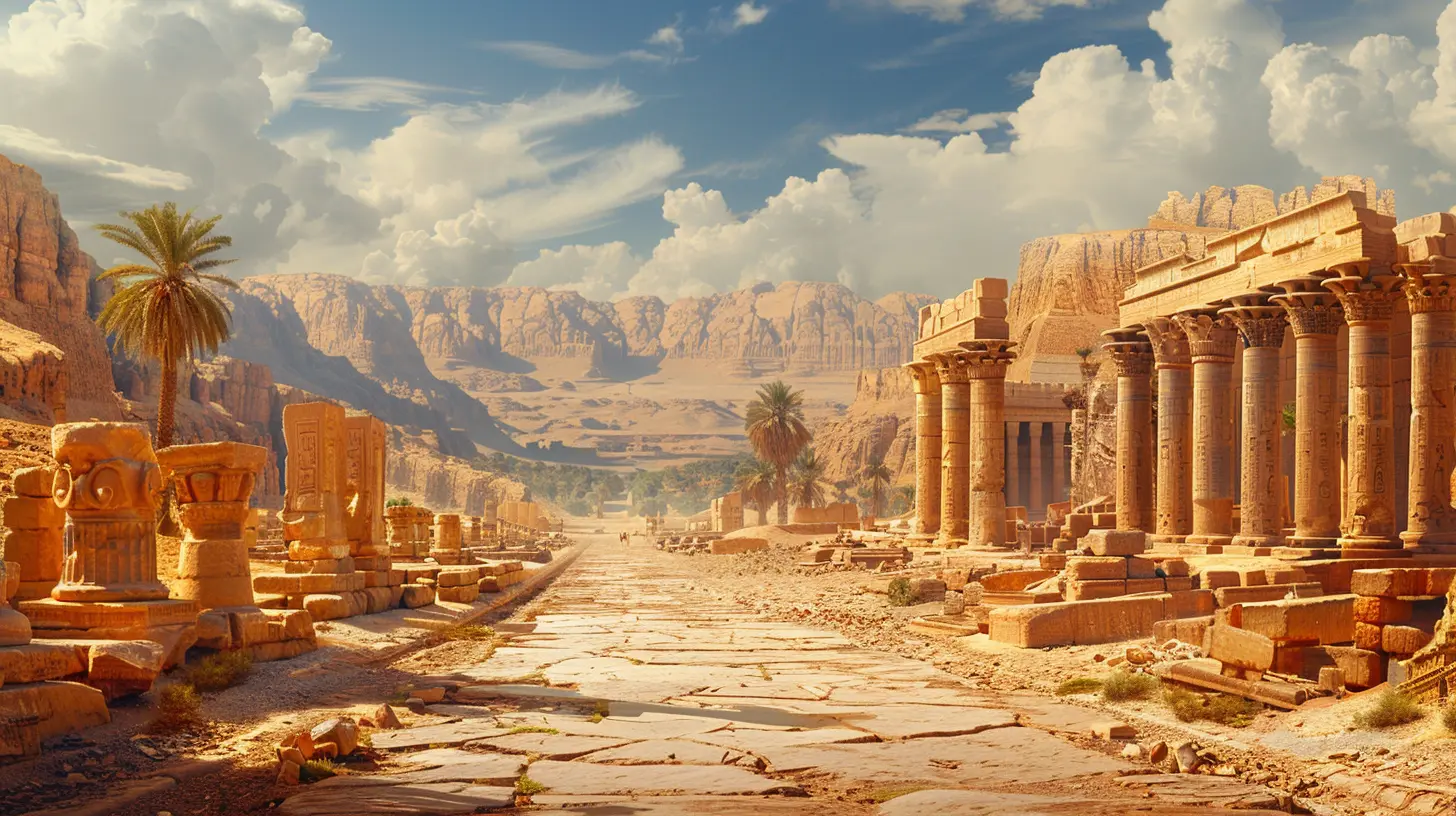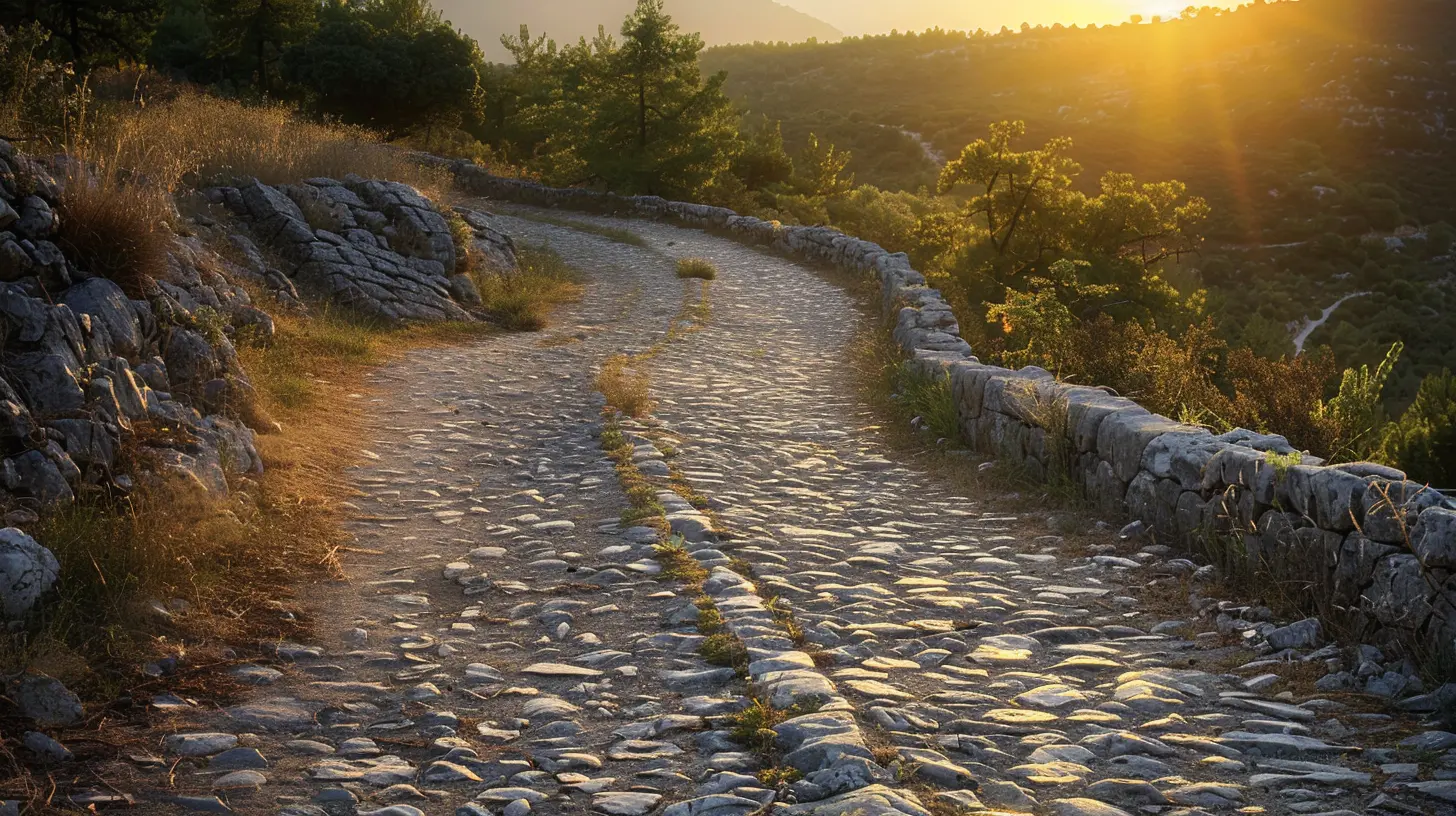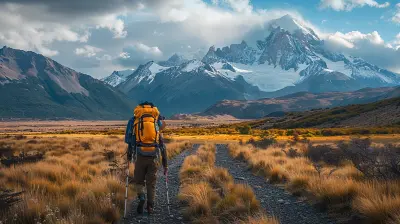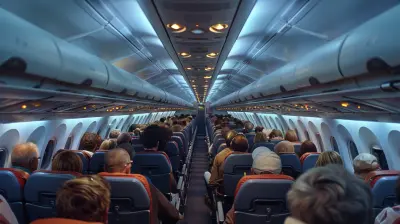Ancient Roads and Highways: The Pathways of Empires
19 August 2025
Have you ever stopped to wonder how entire empires – some of the most powerful civilizations in human history – managed to stay connected across vast distances without GPS or Google Maps? No smooth asphalt, no street signs, no Wi-Fi zones. Yet, they pulled it off. And not only did they survive, they thrived!
How? The secret lies beneath your feet (literally) — in the ancient roads and highways that stitched together kingdoms, cultures, and communities. These roads weren’t just about getting from point A to point B. They were game-changers. Highways of history. Power lanes that shaped the world.
Grab your metaphorical passport, because we're about to time-travel down some seriously historic highways and unravel why these ancient routes were so much more than dusty paths.
Why Roads Were the Superpower of Empires
Let’s start with a simple truth: no great empire ever lasted on isolation alone. Trade, military movement, cultural exchange — these necessitated solid infrastructure. Ancient roads and highways were the backbone of empires like Rome, Persia, China, and even the Inca civilization. They were the silent architects behind greatness.You know how your phone needs a good signal to function? Well, empires needed strong, reliable roads to communicate, mobilize troops, move goods, and extend their influence. These roads were the ancient world’s equivalent of the internet — dense, interconnected, and designed for rapid access.
The Roman Roads: All Roads Lead to Rome — Literally
Okay, so we’ve all heard the phrase, “All roads lead to Rome.” It’s not just poetic. It’s historically true!The Romans were obsessed with roads. And not in a “let’s build a path through the woods” kind of way. No, they built over 250,000 miles of roads — that’s enough to travel around the Earth ten times. These weren’t your average dirt tracks. Roman roads were paved, crowned for drainage, often straight as an arrow, and built to last. Some sections are still walkable today!
Key Highlights of Roman Roads:
- Via Appia (Appian Way): One of the earliest and most famous. It connected Rome to the port of Brindisi — prime real estate for trade and military.- Milestones and Maps: Romans loved organization. They placed stone markers every Roman mile (about 1,000 paces), essentially creating the first road signage.
- Military Precision: These roads ensured legions could march without delay, respond to threats, and maintain Roman order — fast.
Their legacy? They basically laid the groundwork (pun intended) for modern transportation networks across Europe.
Persian Royal Road: The Empire That Could Deliver Faster Than Amazon (Sort Of)
Before Rome even dreamt of power, the Persian Empire had already cracked the code of connectivity.Built under Darius I around 500 BCE, the Royal Road stretched approximately 1,600 miles from Susa (modern-day Iran) to Sardis (modern-day Turkey). What’s wild is that couriers could cover this route in a little over a week using relay stations — that’s faster than some modern bureaucracies.
What Made It Special?
- Post Stations: Think of them like pit stops every 15–20 miles, where messengers could swap horses and rest.- Security: The road was patrolled by guards. Safer than many modern highways!
- Political Control: No empire could be ruled from the center without a way to reach the edges. The Royal Road kept the empire tight-knit.
This was more than a dirt path — it was an arterial lifeline that allowed ideas, orders, and armies to circulate with efficiency unheard of in those times.
The Silk Road: Not a Single Road, But a Web That Changed the World
Alright, full disclosure — the Silk Road wasn’t exactly a road. It was a massive network of trade routes that stretched from China all the way to the Mediterranean.But still, it deserves a spot here for one reason: it was the ancient world's global highway.
And get this, it wasn’t just silk that moved along this road. There were spices, gold, artworks, technology, religions, languages, and even diseases. Good or bad — this road changed the game.
Fun Facts About the Silk Road:
- Not Just One Route: There were multiple paths — northern, southern, maritime — adapting to climate, politics, and trade demands.- Cultural Exchange: Buddhism spread from India to China thanks to these paths!
- Cities as Pit Stops: Places like Samarkand, Kashgar, and Aleppo became melting pots of cultures.
Travelers, monks, merchants, and even Marco Polo made their mark here. Walking the Silk Road was like scrolling through the world’s most diverse feed — just very slowly.
The Inca Road System: Engineering Marvels of the Mountains
Hold up — who says you need wheels to build roads?The Inca Empire, high in the Andes, created roads that not only survived geography but laughed in its face. These were narrow, steep, expertly engineered routes carved into rugged mountains, crossing valleys via rope bridges (yes, actual rope!).
The Qhapaq Ñan (Great Inca Road):
- Built Without the Wheel: The Inca didn’t use carts, yet their roads were precise and functional.- Suspension Bridges: They tied together massive vines and grass ropes to create bridges across deep canyons.
- Chasquis (Runners): These were human messengers who relayed messages and goods across the empire — kind of like the FedEx of the Andes.
Today, parts of these roads are still in use, and some sections are now UNESCO World Heritage Sites. Hiking them? Definitely a bucket-list experience.
The Grand Trunk Road: South Asia’s Timeless Highway
Let’s take a detour to the Indian subcontinent. The Grand Trunk Road might not be as famous globally, but it’s been one of the oldest and longest major roads in Asia — over 2,000 years old!Originally built by the Mauryan Empire and later extended by the Mughals and British, this road stretches from Bangladesh through India to Pakistan and Afghanistan.
Why It Mattered:
- Trade & Taxation: It was a commercial artery, linking the trade centers of South Asia.- Cultural Connector: It unified diverse regions, from Bengal’s lush floodplains to the deserts of Pakistan.
- Still in Use: It’s been modernized, but many parts of the GT Road are still functional today!
It was more than a road — it was a cultural thread that weaved together stories across centuries.
Roads Weren’t Just for Trade…
We’ve talked a lot about trade routes, military movement, and politics. But here’s a surprising twist — ancient roads also had spiritual and symbolic roles.- Pilgrimage Paths: Many roads, like Japan’s Kumano Kodo trails or India’s ancient temple routes, were spiritual passages where people walked for faith, not freight.
- Social Glue: Roads helped people meet, mingle, marry, and migrate. Civilizations didn’t just grow territorially — they evolved socially through these routes.
- Cultural Narratives: Stories, songs, myths — they all traveled along these roads, influencing art, language, and literature.
What Makes Ancient Roads So Fascinating Today?
You might be wondering, “Why should I care about 2000-year-old roadways?”Because they’re still here. Whether buried beneath bustling cities or integrated into modern infrastructure, these roads quietly whisper stories of the past. Walking on them is like shaking hands with history.
Plus, they remind us of what's possible when human ambition meets engineering and ingenuity. And let’s be honest — there’s something magical about imagining a Roman soldier, a Persian courier, or a Buddhist monk traveling on the same path you’re standing on.
Bucket-List Worthy Ancient Roads You Can Still Visit
Feeling inspired to lace up your boots and walk in ancient footsteps? Here are a few ideas:- Via Appia (Italy) – Rent a bike or walk from Rome to the ancient port town and soak in timeless scenery.
- The Silk Road (China to Central Asia) – Join a guided tour and explore cities like Kashgar and Samarkand.
- Qhapaq Ñan (Peru) – Trek to Machu Picchu following the Inca Trail — it's as spectacular as you’ve heard.
- Grand Trunk Road (India/Pakistan) – Drive through history on one of South Asia’s oldest highways.
- Kyoto Pilgrimage Paths (Japan) – Stroll through spiritual paths lined with moss-laden temples and bamboo forests.
Final Thoughts: The Roads We Build, The Worlds We Create
Isn’t it amazing how something as seemingly simple as a road can carry such deep meaning?Ancient roads weren’t just about travel. They were about power, connection, exploration, and change. They were tools of conquest and peace, of commerce and culture. And they still shape the way we move, think, and live today.
Next time you're stuck in traffic or walking down a shaded country lane, take a second to wonder — who might have walked there before? What stories did that path carry? Maybe, just maybe, you’re following in the footsteps of empires.
all images in this post were generated using AI tools
Category:
Historical SitesAuthor:

Pierre McKinney
Discussion
rate this article
1 comments
Nina McGarvey
Fascinating insights! Excited to explore!
August 21, 2025 at 4:15 PM

Pierre McKinney
Thank you! I'm glad you found it interesting—enjoy your exploration!


